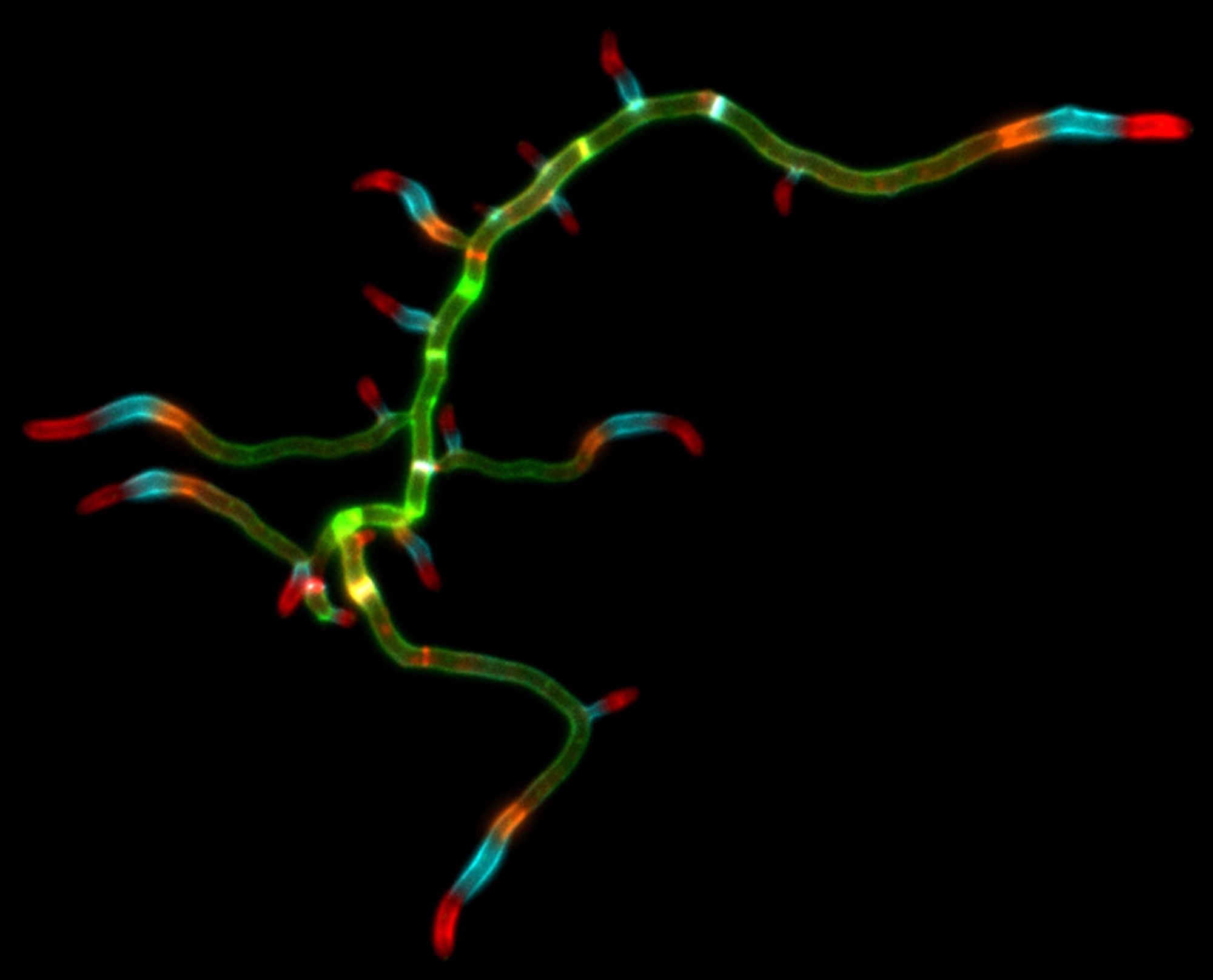Fluorescent D-amino acids (FDAAs) were developed in collaboration with Michael VanNieuwenhze’s laboratory.
Obtaining FDAAs
We are glad and willing to provide small samples of FDAAs for research purposes. While we want to maximize the ability of researchers to use FDAAs, the expense to synthesize and send FDAAs could not be sustained. Commercial options should be available soon, but for now we have to charge for FDAAs. We provide three standard FDAAs (in stock and ready for shipment):
- HADA: 250$/2 mg (DAPI channel)
- BADA: 400$/1 mg (GFP channel)
- TADA: 400$/1 mg (Cy3 channel)
These FDAAs can be obtained after completing a Material Transfer Agreement (see here for information).
Uses and properties of FDAAs
Fluorescent D-amino acids (FDAAs) enable the fluorescent labeling of areas of peptidoglycan synthesis in most bacterial species. FDAAs are covalently incorporated into peptidoglycan through the activity of peptidoglycan synthases, indicating the formation and remodeling of peptidoglycan in situ.

The main publications describing FDAAs and their use are:
- In Situ probing of newly synthesized peptidoglycan in live bacteria with fluorescent D-amino acids.
Kuru E, Hughes HV, Brown PJ, Hall E, Tekkam S, Cava F, de Pedro MA, Brun YV, VanNieuwenhze MS.
Angew Chem Int Ed Engl. 2012 Dec 7;51(50):12519-23. doi: 10.1002/anie.201206749. - Synthesis of fluorescent D-amino acids and their use for probing peptidoglycan synthesis and bacterial growth in situ.
Kuru E, Tekkam S, Hall E, Brun YV, Van Nieuwenhze MS.
Nat Protoc. 2015 Jan;10(1):33-52. doi: 10.1038/nprot.2014.197. - Full color palette of fluorescent d-amino acids for in situ labeling of bacterial cell walls.
Hsu YP, Rittichier J, Kuru E, Yablonowski J, Pasciak E, Tekkam S, Hall E, Murphy B, Lee TK, Garner EC, Huang KC, Brun YV, VanNieuwenhze MS.
Chem Sci. 2017 Sep 1;8(9):6313-6321. doi: 10.1039/c7sc01800b.

FDAA structures and properties


